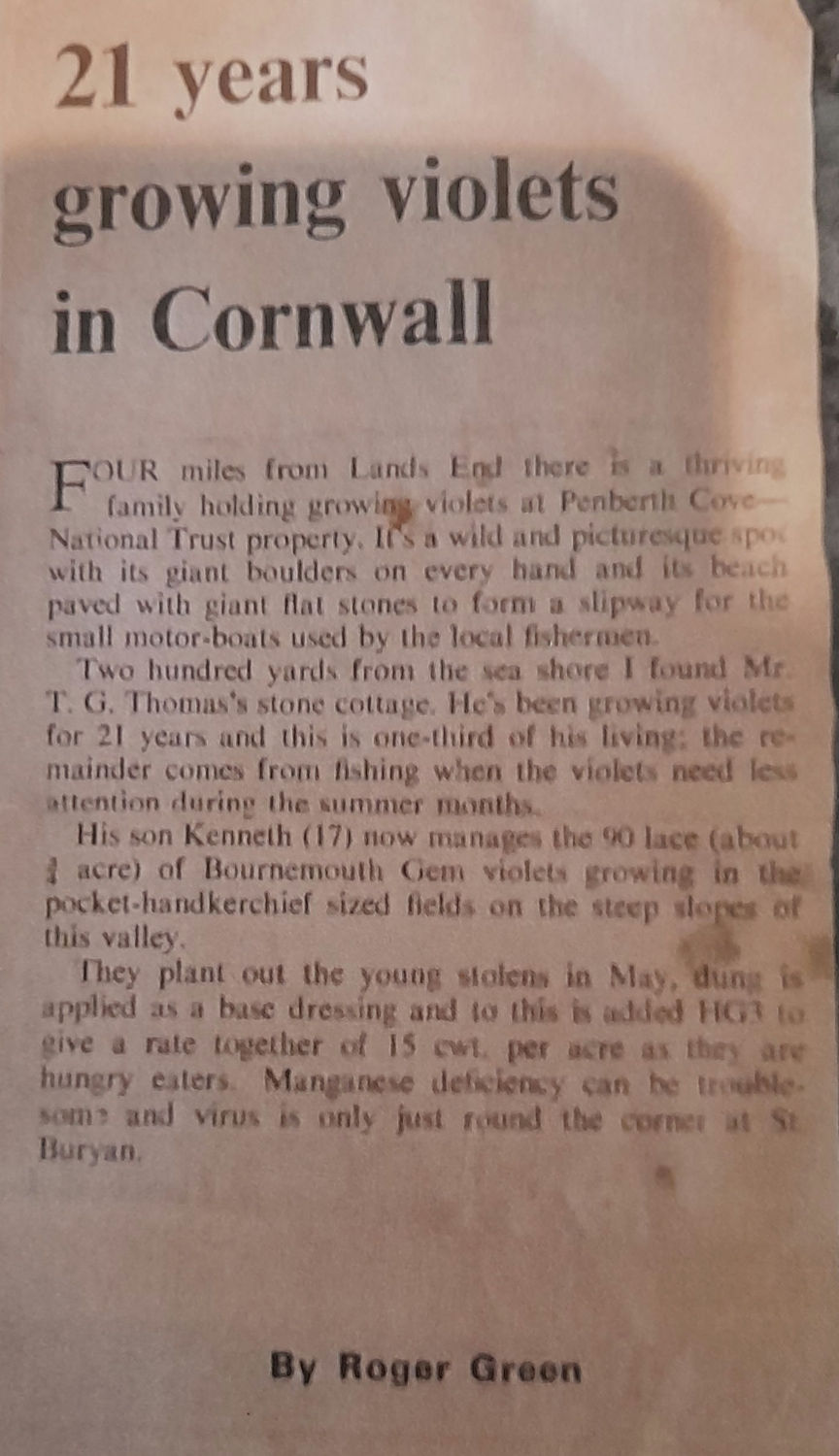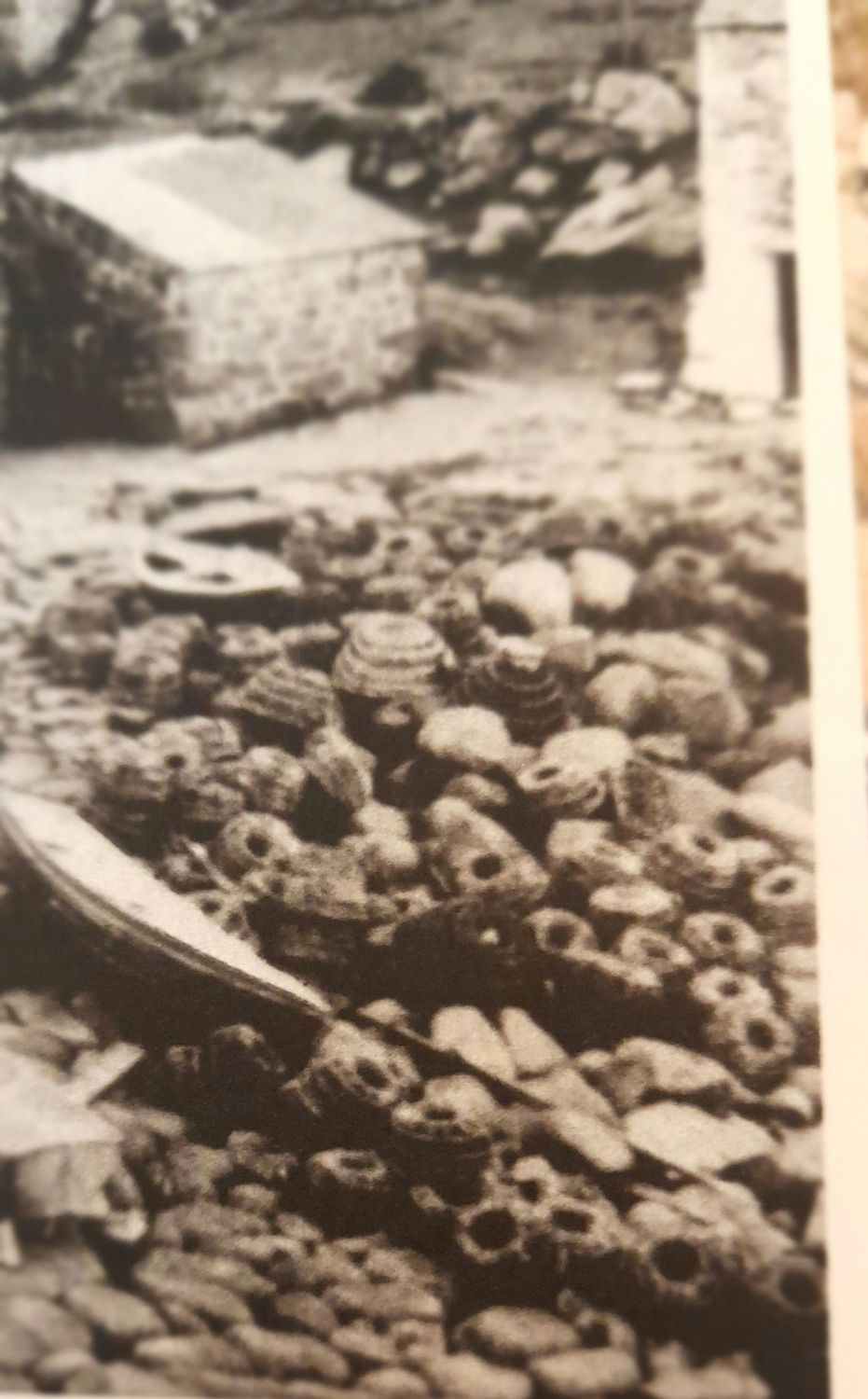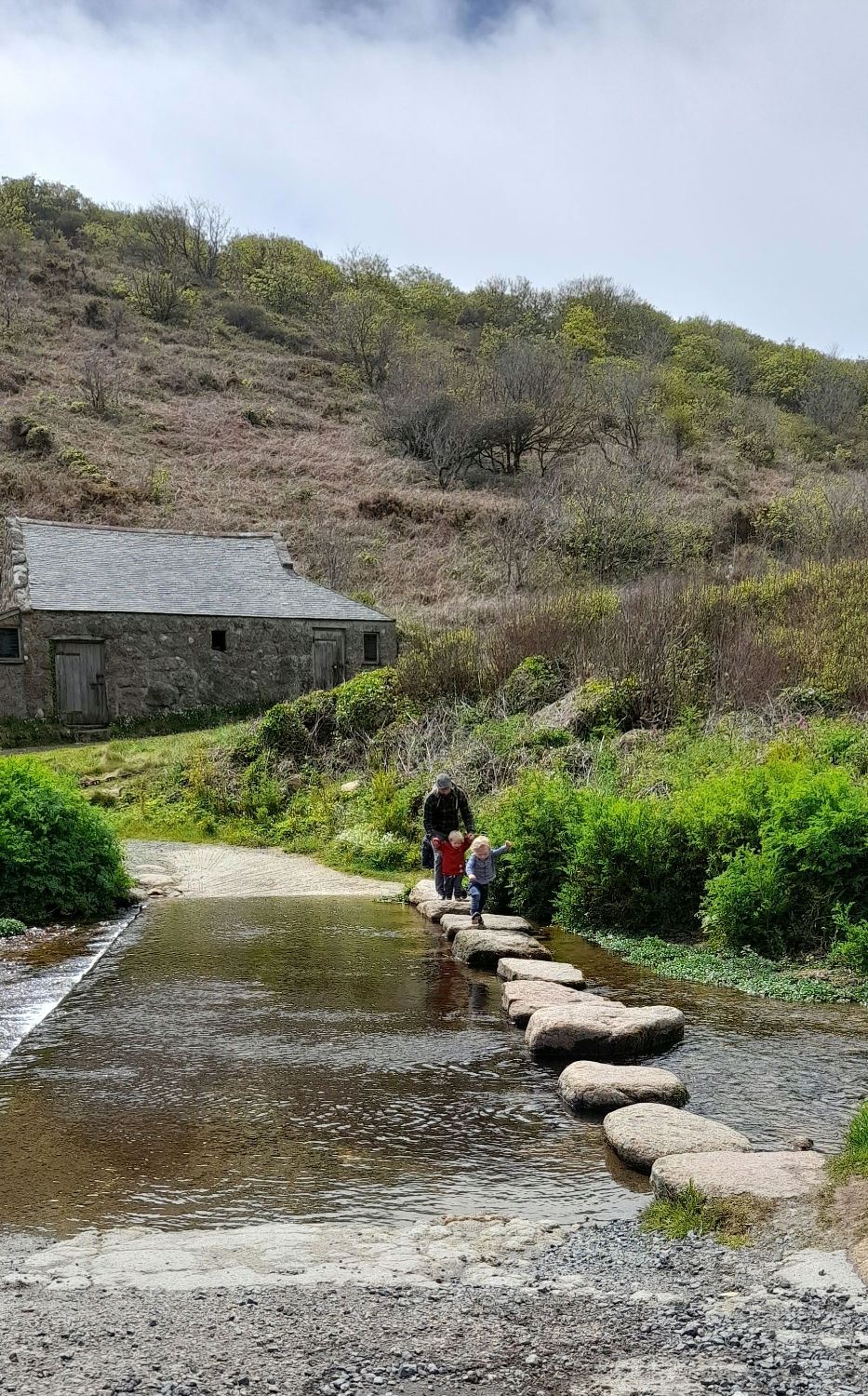Updated: Sep 3, 2022
A really important element I want to capture in the film is a strong sense of the Withy pot crafts heritage and community spirit by adding a splash of nostalgia! So we began by looking at old photographs with Kathi Jones, who is the daughter of my partners late grandfather, Withy pot maker Tommy Thomas.

A photo that really caught my eye was one of Kathi as a young girl playing with a banana box as a cooker and her father Tommy on the left who we believe was preparing withies or wires, which they appeared to sometimes use to make their Withy pots.

Working as a fishermen in the Cove was more than just a job, it was a lifestyle choice! They lived and breathed fishing and it formed a large part in every member of the family's lives.
Kathi can remember having to keep quiet when listening to the shipping forecast and seeing the tide times on the wall which were not only important for the fishermens plans but also plans for Kathi to go swimming!
As mentioned in a previous blog, fishing was not the only source of income for the family, some also worked with flowers! This was mainly due to fishing not being all year round.

Above is a picture from a newspaper article which talks about the Thomas families work with violets. Pictured is Tommy Thomas' son Kenny, my children's grandfather and Mary Thomas (a friend of the family who was employed from a near by village called St. Buryan).
Now Kenny was known not to be the biggest fan of picking flowers, he much preferred to be out at sea! but Violets did create one third of their income, so needs must! I don't blame him really, I bet their backs hurt after a while and he did have very long legs!

When the violets were picked they were bunched together on a large table that dominated a room at Kathi's home. Kathi who will have been less than 10 can remember occasionally trying to help with bunching, but not picking as she was afraid of frogs leaping out from beneath the flowers! ... She can also remember ivy being added if the leaves were small, violets being laid down on an oil cloth, tea, cigarette smoke and Apollo splashdown on the radio which Kenny wedged on top of a pelmet to get signal!

Between 14 and 16 violets were bunched together and held with a rubber band, then kept in water over night. In the morning Tommy and Audrey (Kathi's mum) then placed them inside cardboard boxes with wooden dowels in time for the bus which took the flowers to Penzance Station to be transported to Covent Garden, London!
There were other flowers being grown in the Cove, including a variety of daffodil called Penver, which I plan to discuss with a resident of the Cove called Sarah Batten-Rowe, who runs Penberth Plants www.penberthplants.co.uk/
Residents didn't venture far from the Cove, Kathi can remember her father saying he's going down the City for a walk! Which actually meant to the Cove. The reason for this was they rarely needed to as they had most things there and the community worked together! There were also travelling butchers and green grocers.

A great example of this community spirit can be found in the photo above. It was taken by now retired Withy pot maker Robert George (who we were meeting later) and pictured was Tommy Thomas and his son Kenny Thomas being towed by another local fisherman called Barry Batten, Sarah Batten-Rowes dad. If you look closely you can see Tommy laughing and Kathi says she can imagine him saying something like "Getaway with you!... typical to take a picture of me being towed!" Robert is said to have sent it to him in the post just to rub it in some more Hehe.
A family called the Favell's acquired a large part of land and buildings in Penberth just after WW1 which were in great disrepair. They brought with them work for the communty, including builders, tradesmen, maids and gardeners.
It was almost time to venture out to have a tour of the Cove! Kathi showed me an old photo of Penberth and I couldn't help but notice the large amount of Withy pots scattered about!


They remind me of little barnacles.
Pots usually only lasted one season and once there was no longer any use for them they were often left discarded and naturally broke down, unlike the modern pots you find washed up on the beach made from plastic and tyres these days!

Right then time to go down the city for a walk with Kathi and Sarah's mum Penny, who also lives in the Cove.

I noticed not all that much had changed, apart from the sight of modern pots instead of Withy pots. This was where we met Robert.

I did spot one Withy pot though and Robert told us this was one of Nigel Legge's, a Withy pot maker who is based in the Lizard! I have heard that Nigel has been commissioned to make pots for film sets before, so maybe this was left after filming Poldark!?....I will have to do some investigating, but I think that's a post for another day.

Standing with your back to the sea, lies the remains of an area that Withy pots were once made. Today some of the community still work together to keep the cove looking beautiful, along with the National Trust. So far though, areas such as this, which are overgrown and/or covered in garden waste have been left alone. They are however an area of importance to the community and it's heritage which they believe should be protected in some way!

We headed up a coast path where more pot stand locations could be found (a tool used to make Withy pots).

Kathi showed us her dad's old spot.

Here is a picture of him using his pot stand in this location in the late 1960s.

Robert also showed us his old spot and discovered his pot stand in amongst the plants. He used to work with Richard Mathews, another fisherman who still lives in the Cove. Robert would make the top half and Richard would make the bottom.
He explained that he stopped making Withy pots in the 70s, then went on to use more modern pots which he described as French barells.

Here is a picture of Barry Batten in the 70s with some modern pots.

Heading down the path we walked past another old pot stand spot....I wonder who it belonged to?

As we came to the end of the path, through the trees you could see a bright red phone box. Kathi told me this was used as their home telephone and the house opposite was where they lived when she was growing up. She can remember her brother Kenny avoiding calls from a certain girl he was seeing and popping stones under the phone so that it appeared engaged...but frustratingly the neighbour who lived directly next to it, who used to keep the phone box tidy, always moved the stone!

.....whenever I see a red telephone box now I will remember that story!

Above is a picture of Kathi and Kenny's home.
The tour was now over and it was almost time to go home. My partner and our two young boys excitedly told me how much fun they had had! They fed chickens, played by the water around the boats and crossed the stepping stones in the river! Our eldest even had an accidental dip in the water!
This trip to Penberth has confirmed to me how important sharing stories of your families past is and also the importance of making new memories to add to the same story. This helps prevent previous chapters from being broken or forgotten and allows the story to continue to be written.
I hope that my children will have a strong understanding of where their family is from and who they were, so that they can begin life with an understanding of who they are and have the gift of having a sense of belonging.
Withy pots were not only made to capture lobsters and crabs, but they also hold a treasure trove of stories which are waiting to be discovered! I can't wait to share more of these with you.

Thanks for reading :)
References
Book- The Favells of Penberth
As part of my Jewel-Withy project I am really excited to be teaming up with the Cornwall College media department to make a film documentary and photographic imagery to help record the critically endangered craft of making a Withy pot and the stories of its heritage.
The live brief begins in June and in preparation I am talking to all of the participants. Yesterday I was in Rosudgeon near Helston, Cornwall and met with 91 year old retired Withy pot maker George Chambers, his son Tom Chambers who is also a Withy pot maker and expert basket maker Geraldine Jones, who kindly arranged for us to meet in her beautiful garden. Oh and I nearly forgot to mention little Teddy the dog who is such a cutie pie!

Geraldine walked Tom and I through a natural willow arch decorated in vibrant purple flowers! I never thought to use willow as a form of trellis!

She showed me a another amazing example of using willow to grow other plants from! Look at this Clematis!!!

We then passed a collection of Stogs! I love this name! So much infact I'm going to write it again, Stogs! They are the stumps of willow trees that the willow branches (withies) are harvested from during the months of November to March.

Next we collected the withies which she very generously donated to us for the film and photography!

Something that struck me straight away was the variety of colours that could be seen! Geraldine and Tom both explained a little about this to me.

The colour of the willow can depend on a number of things, including the variety and whether it is freshly cut, boiled and stripped back (buff) or dry. This fact reminds me of a quality I enjoy in the metals I use to make jewellery which either keeps it's lustre like gold or oxidises or forms patinas when open to the elements like copper.

These golden yellow withies are a Cornish variety and go dark when dry. The popular Black Maul willow often used in Withy pot making and basketry that I have mentioned in previous posts doesn't grow all that well in Cornwall, but these seem to thrive! I might have to get hold of some myself for my garden!

Tom will be making the traditional Porthleven style Withy pot, which he learnt from his father George. This will be photographed and documented inside an exhibition book along side other traditional pots from different parts of the South West so that similarities and differences can be easily recognised between them. We also plan for Tom to be filmed demonstrating/discussing the Withy pot and his father George will be along side him sharing his knowledge and stories. I only managed to talk to him briefly, but I found his stories fascinating! I can't wait to get started!























